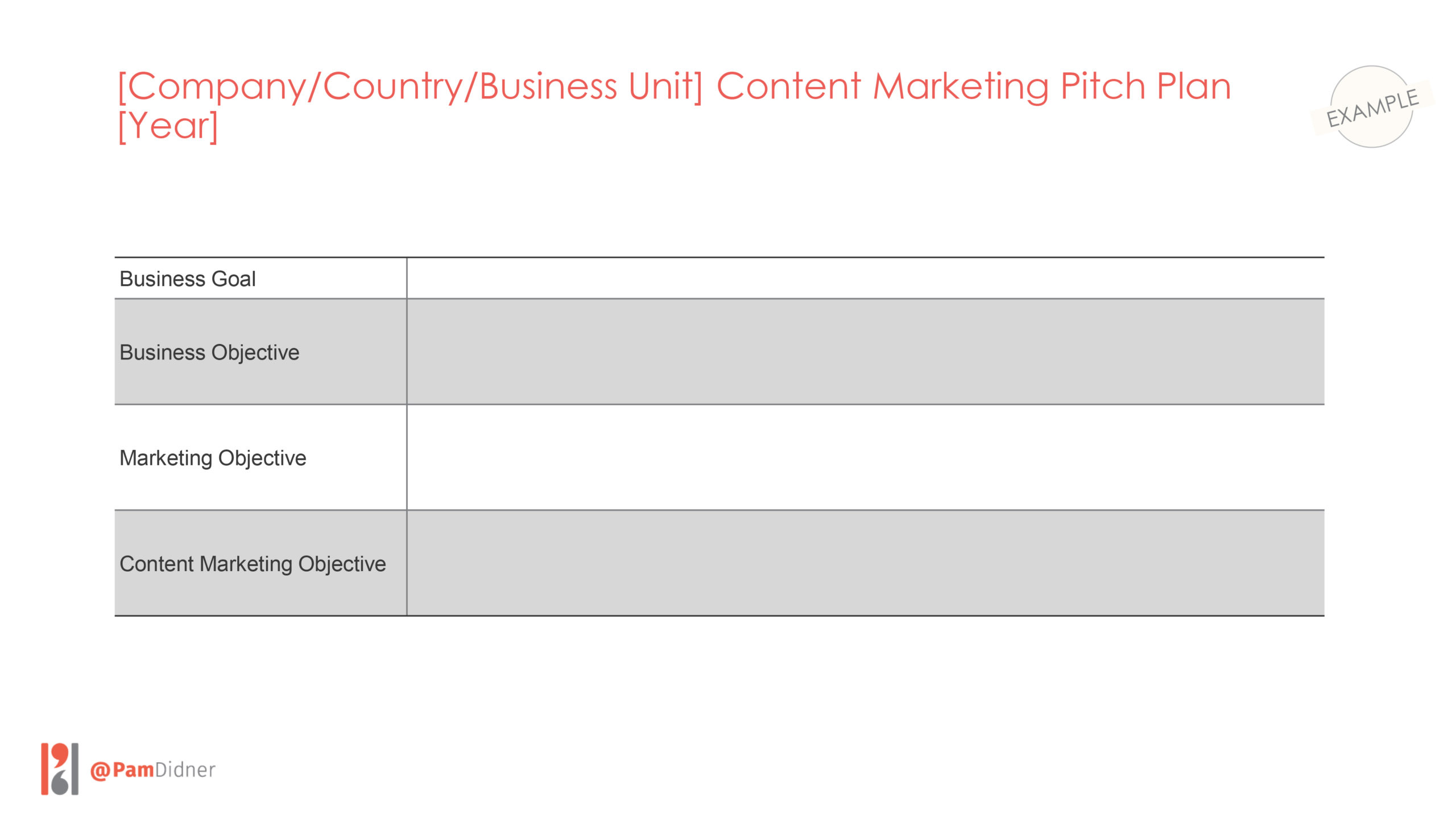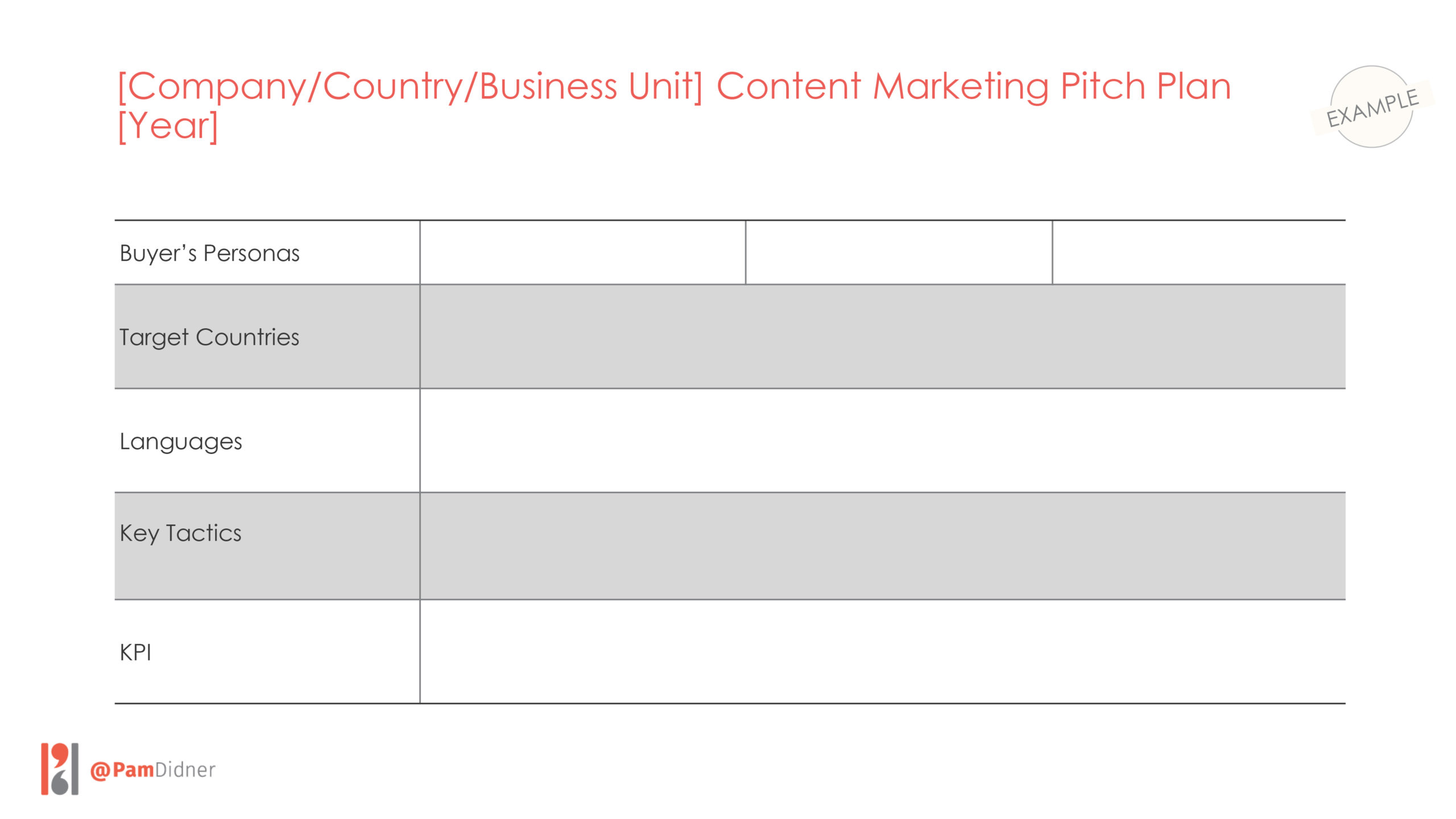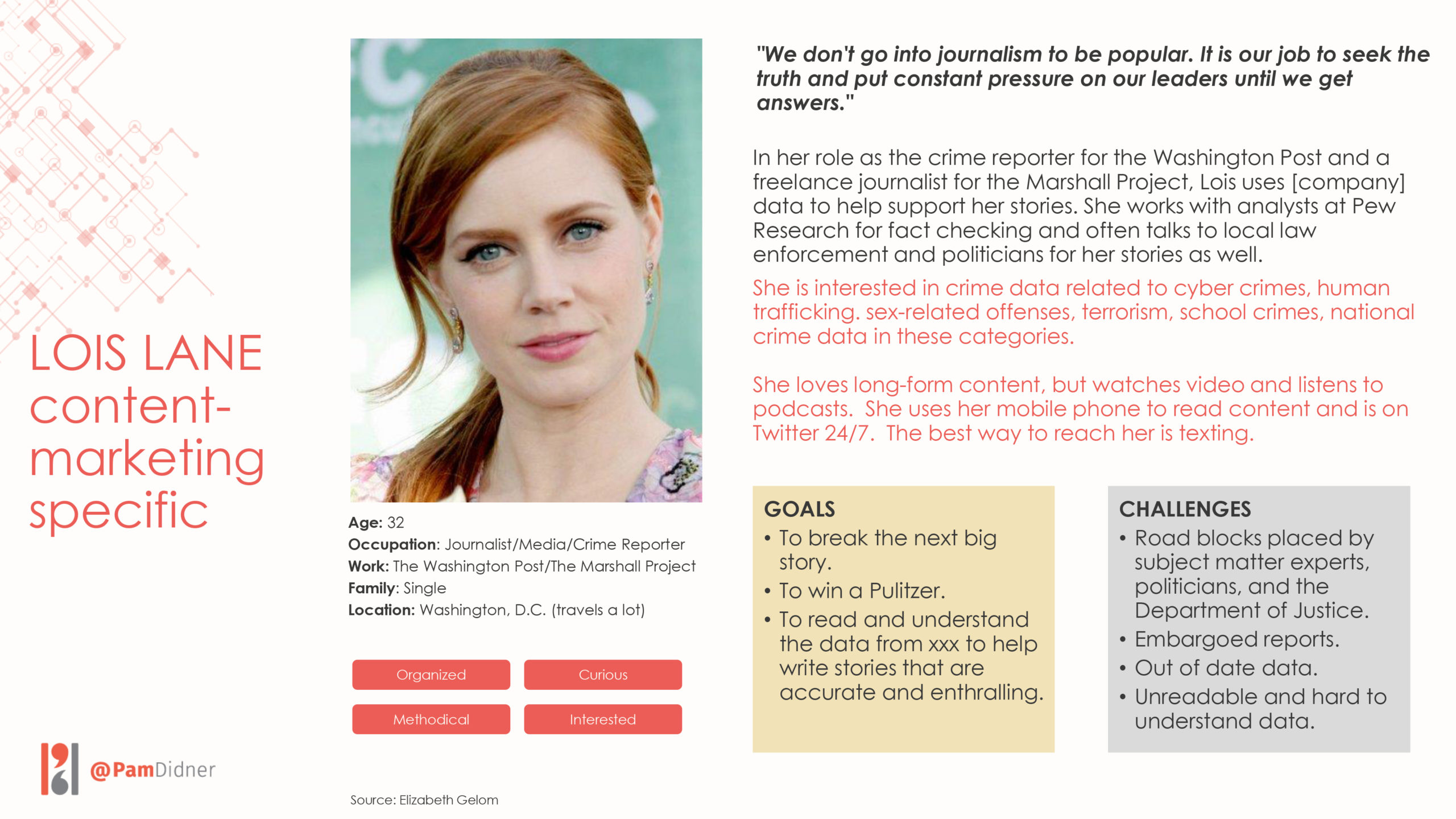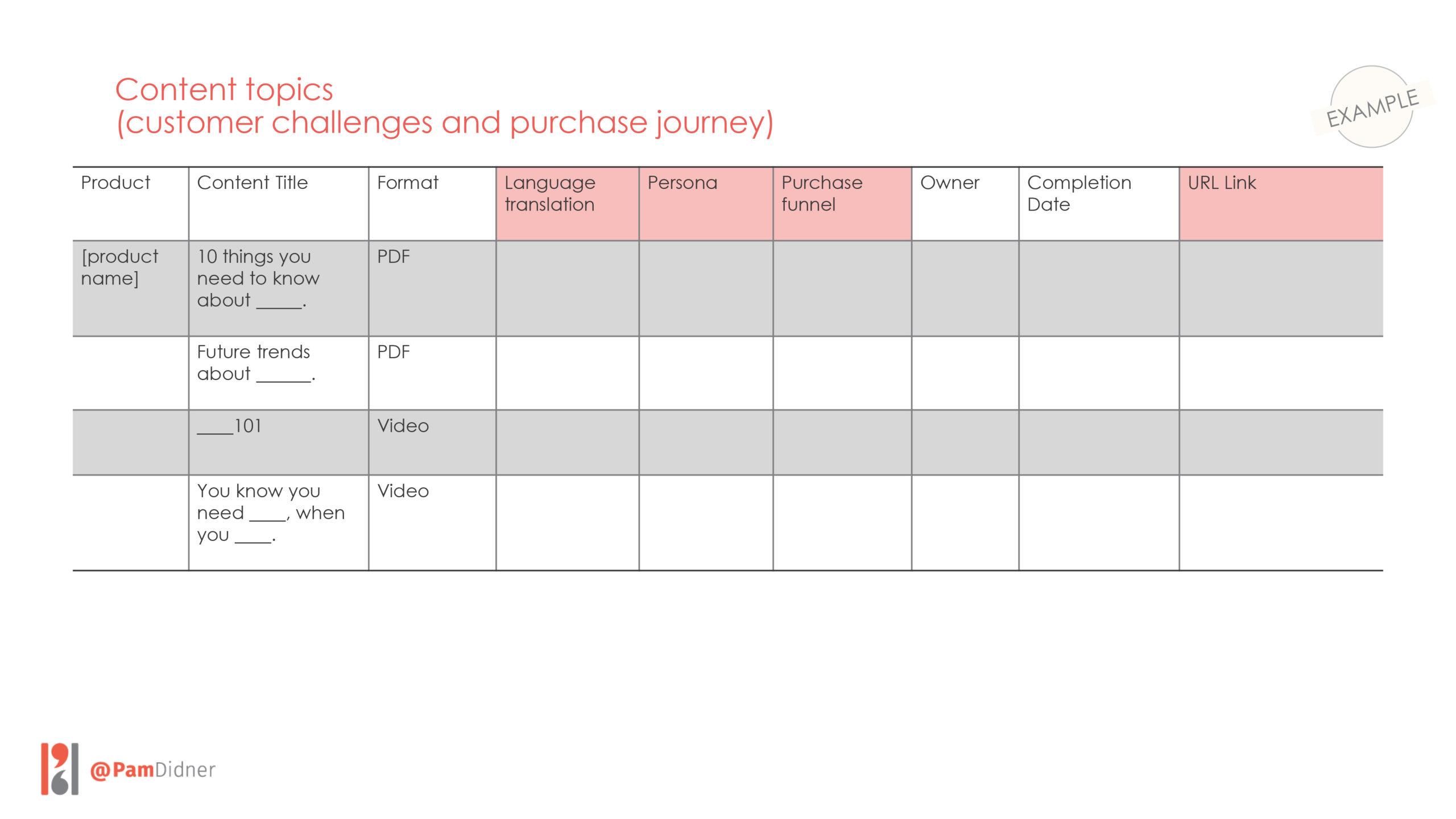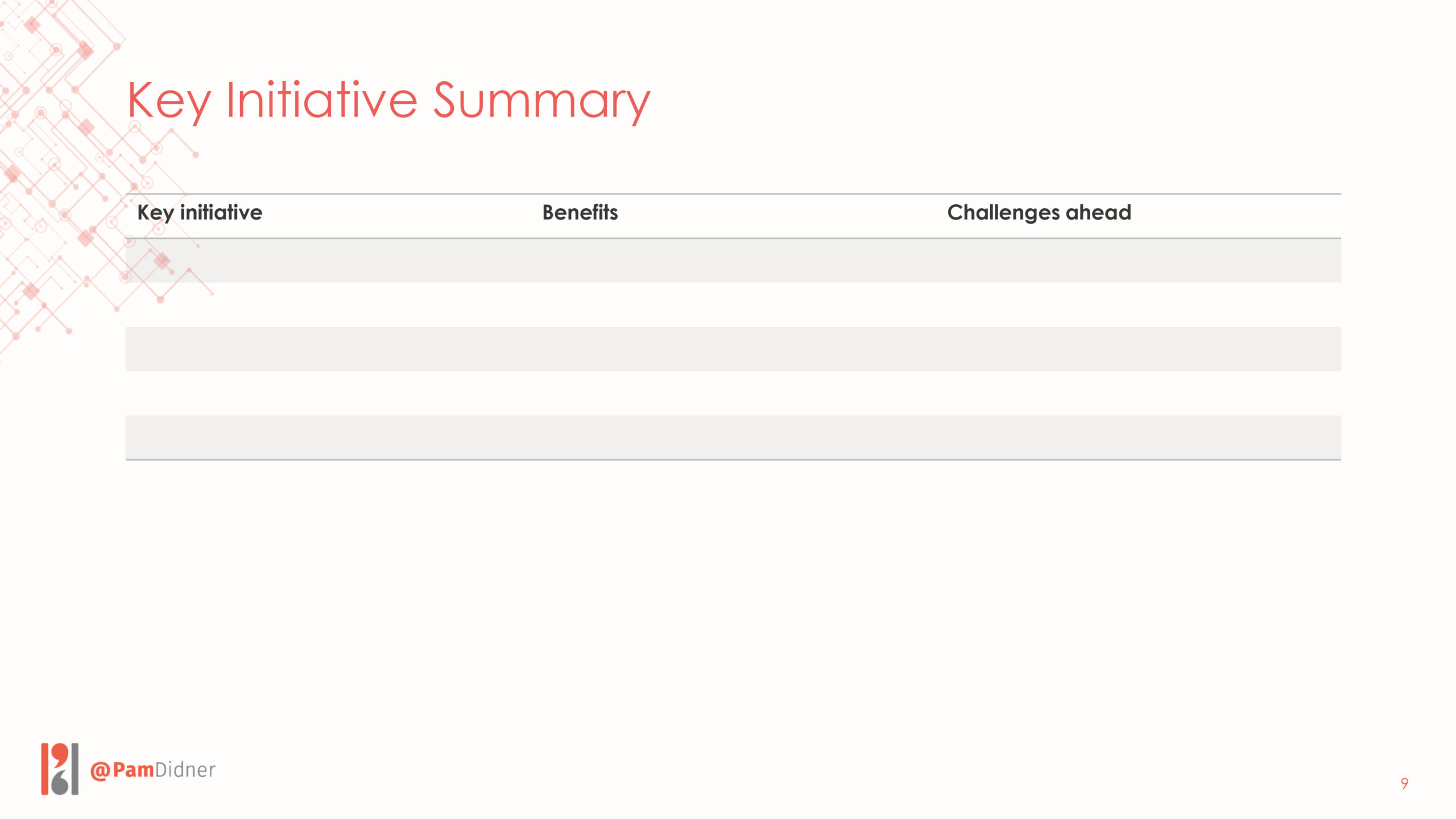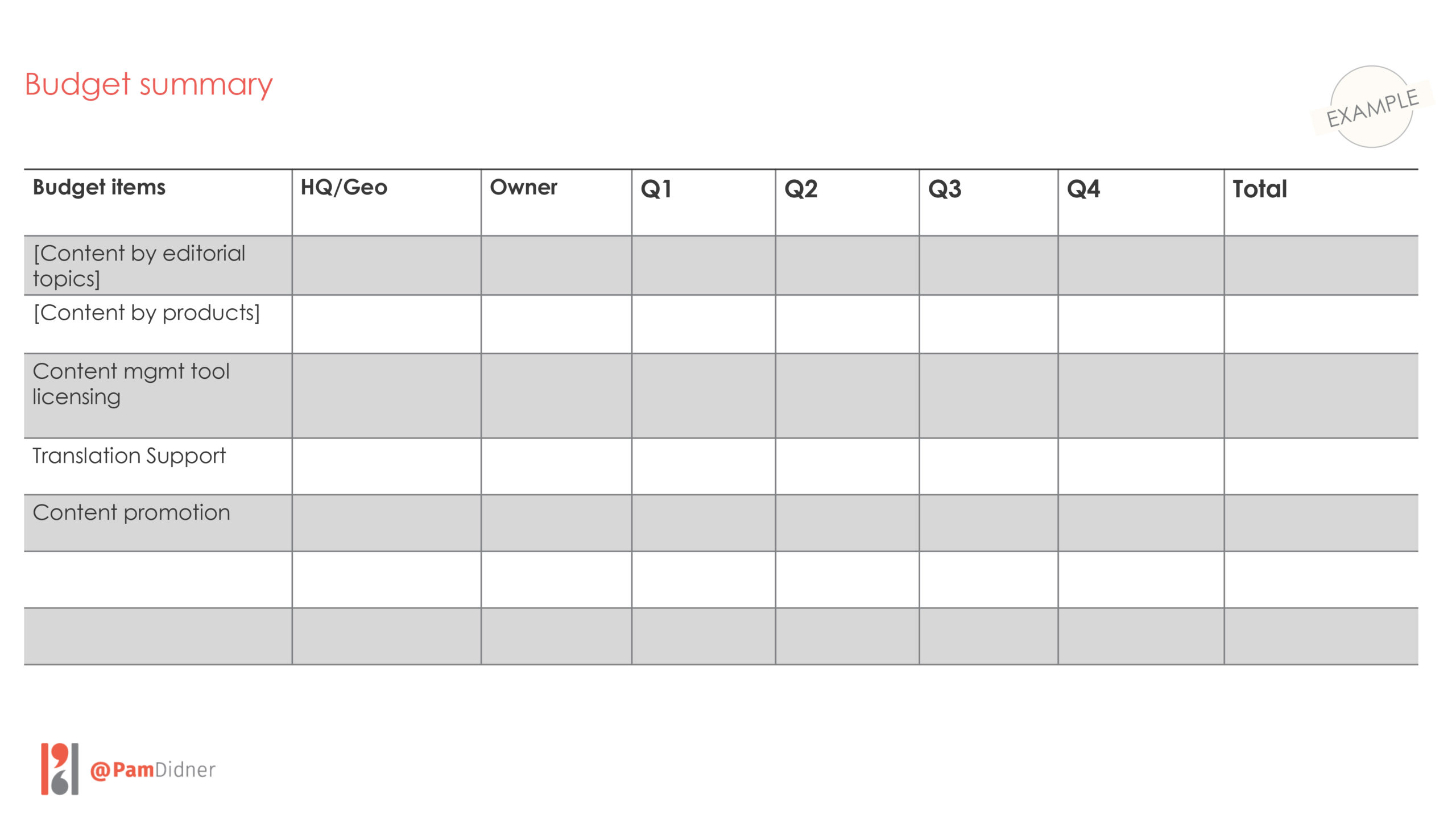
Over time, many enterprises have grown their presence and market segment share by expanding into various regions of a country or in new countries and different continents. From a sales perspective, that’s fantastic. However, it creates challenges for marketing, especially content creation and management.
The biggest issue any content marketer encounters in supporting a growing global company is
“How to scale consistent creative, messaging, and many content pieces with minimal customization, yet resonate with an audience and drive conversions at the same time.”
There are many elements to unpack in that statement: consistency, customization, relevance, conversion, and cost management.
We want them all, but it’s like that old saying in software development, “Fast, good, or cheap – pick two.” Relating this to scalable content marketing, you’ll need to navigate the delicate balance of consistency vs customization, relevance vs conversion, and big vs small budget.
You need to make a conscious trade-off among these elements. You can’t have it all. If you prioritize customizations, well, you may need to have a bigger budget. If you want to drive conversions, you may need to create additional content that is more conversion-focused.
All these elements need to be addressed in your global content marketing plan and on-going execution!
Before you create your marketing plan
Working with many clients, I’ve come to realize that the best way to prepare your plan is to gather feedback from your internal stakeholders and conduct a content analysis of your competitors.
Know who your internal stakeholders are. They can include sales, different marketing groups, including region and country teams, product teams, business units, and even specific senior executives. Gather their feedback, recognize their needs, comprehend their expectations of your content marketing efforts.
Be aware that they will have many requests, and some of the requests will conflict with each other. For example, management wants to have more thought-leadership content, but the product team would ask you to spend all your budget on product content.
You also need to identify the content marketing landscape of your competitors. Use SEO tools to understand your competitors’ domain authority, types of keywords they tend to use, types of content they create, and content ranking.
Analyze internal feedback and external research and compile a list of requests and prioritize them. Some of the requests will be addressed as part of your plan; some will be addressed as part of on-going communications. Some of them will simply have to deprioritize. If you do that, you need to make sure that you communicate with your stakeholders for closure.
Here is a quick template that you can use to create a summary of requests and gap.
Create your scalable global content marketing plan
Every company’s content marketing plan is different. Many marketers tend to look for a standard template and copy the template as it is. It’s OK to look for templates, but I’d recommend that you modify the templates to fit your needs.
In general, your plan should address some or all of the following questions:
- What do you want to accomplish with the marketing plan?
- Who is the audience of the marketing plan? (A marketing plan is an internal document to align internal teams. The audience should be your internal stakeholders.)
- What are their concerns related to content marketing?
The above questions can be boiled down to what I call the 11 questions: 9 Ws and 2Hs. Use them to structure and flow your plan logically.
- Why do we need a content marketing plan?
- What do we want to accomplish with content marketing?
- Who is our audience?
- How do we measure our success?
- How much money is required?
- What strategy and key tactics to accomplish our business goals?
- Which countries and languages are our priority? Where is our business focus?
- Who should do what on editorial planning and content creation?
- What is our messaging?
- What challenges will we encounter in implementing content marketing?
- What should be done when and by whom?
Most of the time, you can pretty much map the feedback you gather from your internal stakeholders into the 11 questions.
Marketing two-pager
The first 7 questions above can easily be summarized into a marketing two-pager. I talked about a marketing objective two-pager extensively in this blog post: Important Templates You Need To Update Your Marketing Plan AGAIN Post Covid-19
I am a strong believer that every marketing plan should start with a summary page that provides a quick peek at your overall marketing plan. In the marketing plan, you need to articulate how business objectives tie to marketing objectives and how marketing objectives tie to your content marketing objectives.
From your content marketing objectives, you clearly lay out your strategies, target personas, priority countries, languages to support, key marketing tactics, and KPIs (Key Performance Indicators). Whoever reviews your plan can instantly understand your focus and without confusion.
If your internal stakeholders agree with you on your two-pagers, they simply agree with you on:
- Marketing objectives
- Content marketing objectives
- Content Marketing strategy
- Target personas
- Language and country priority
- Key content marketing tactics
- KPIs
On top of that, you show your stakeholders and management that you can think strategically and help them connect all the dots.
Here are the two-pager templates you can use.
My clients use these two pages as the cover of their marketing plans. Many of them modify my templates and add or delete elements as they see fit. The two-pager also serves as a great executive summary when they present to senior management!
Buyer personas: Global vs Local
In a global content marketing plan, you need to look at buyer personas at both the global and local levels. Some personas can have one standard global level, such as IT managers. If you are selling the same software to IT managers around the world, you may be able to get away with one IT manager persona for multiple countries if they use the same technologies and most of them know how to read English well.
Some personas need to be localized at a country-level depending on your products’ usage, customization of your products, or users’ language ability. This will impact your content planning because you may need to emphasize different usage points.
A discussion needs to happen between the corporate and local levels to determine the personas you will use.
Since we all have finite resource and budget, the fewer the personas, the better.
If you can’t agree on this, you’ll have a hard time creating your editorial and content roadmap.
Here is one example of a persona that you can use as a template to create a customized local persona:
Global Editorial Plan and Content Roadmap
A global editorial plan is usually driven by headquarters or corporate. This list of long-form or 3rd party content may be driven by – products, quarterly themes, trends, or technology-topics.
Most of the time, it’s likely to be product and technology-driven because it’s easy to get subject matter experts to contribute content based on their product and technical knowledge. This can also be launch-driven if the company has major product launches coming up.
I usually recommend clients create one slide per quarter and provide a high-level list of content by different formats, such as white papers, podcasts, keynote presentations, videos, etc. Again, you can keep it high level, so it offers a chance to share plans with your management and local teams.
Here are some template examples for your reference:
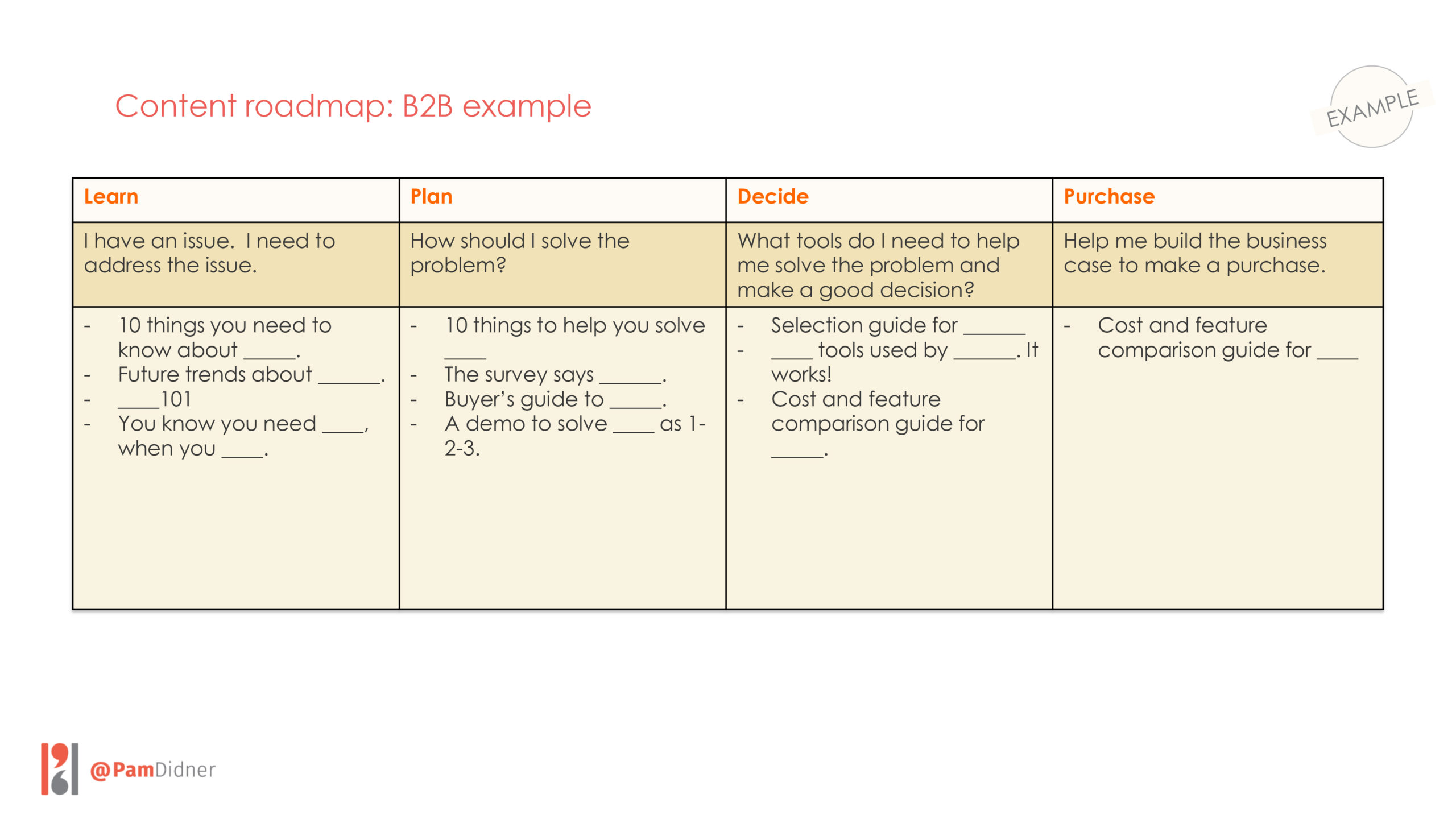
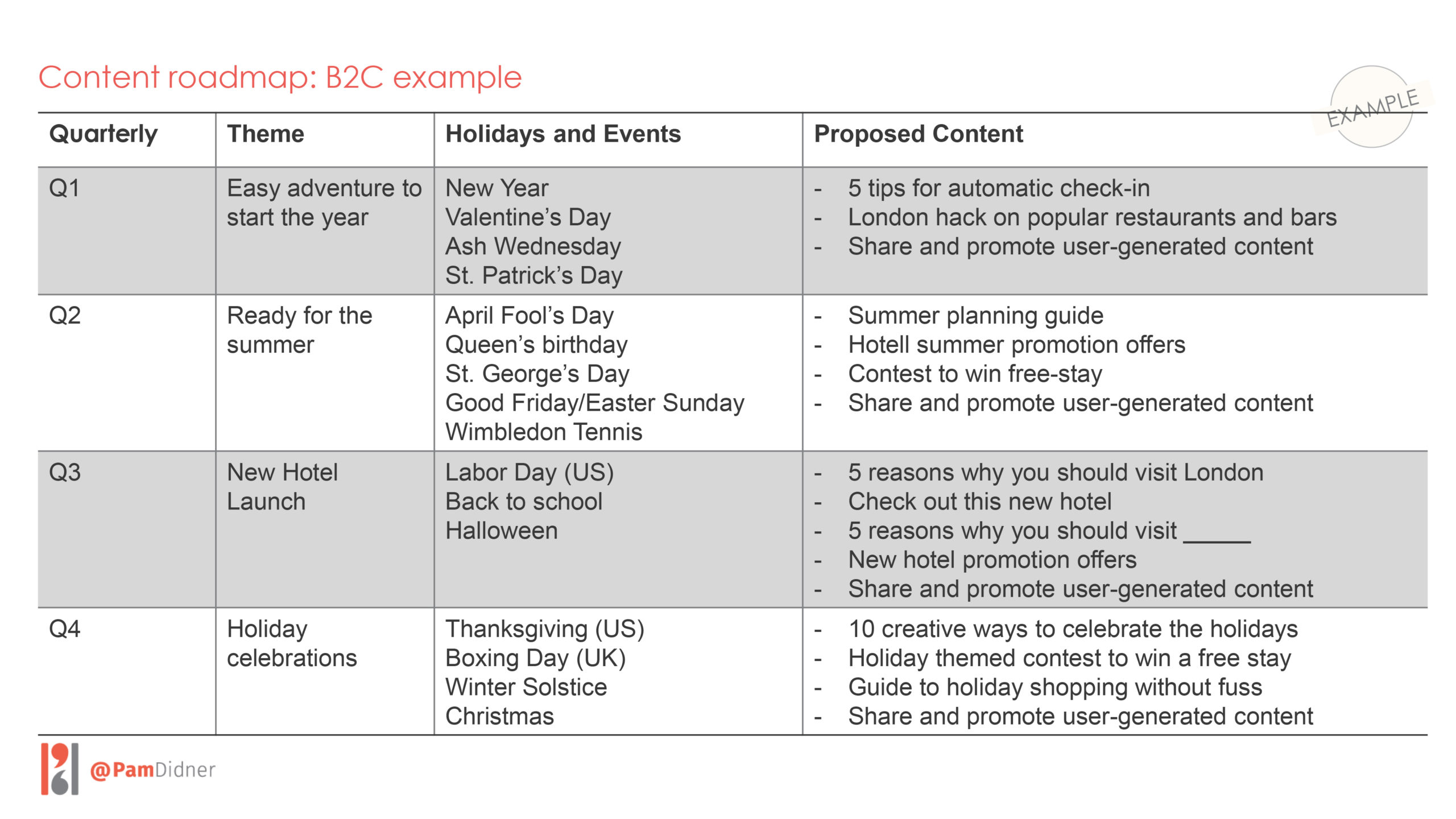
Content by country and language priority
As part of the content marketing plan, you should have a slide to show what content pieces will be translated for local usage. This is a gray area in many companies. In some companies, the translation budget is managed at the corporate level. In some cases, the local team sets aside money for translation.
Translation and customization are largely a budget and ownership discussion.
No company has the budget to translate content to all the languages around the world. Therefore, it’s important that your plan communicates clearly the countries and languages that the team will cover and the content pieces that will be translated and customized.
Here is the blog post I wrote about localization and translation: Globalization through localization.
Messaging
I wrote a detailed blog about messaging frameworks. This blog post is one of my most popular: How to Create a Solid Messaging Framework: A Guide for B2B Marketers.
If you are interested in messaging, please check out the blog and the templates.
Key Initiatives
This section addresses #10 and #11 from the 11 questions above:
What challenges do we encounter in implementing content marketing?
What should be done when and by whom?
I recommend my clients create one slide to summarize some of the key initiatives they want internal stakeholders or senior management to know about. For example, marketing automation and CRM integration, content management library in different countries, translation using machine-learning etc.
I’d select initiatives that are big enough to impact multiple divisions, several local teams, or are related to big-budget items that have been approved as part of annual planning.
Here is a one summary slide template:
Budget and KPI
In the marketing plan, there is always a budget slide. However, many marketers choose not to share the budget slide broadly, which makes sense. On the budget slide, I’d recommend that you break down your budget by quarter, by content format, by content production vs promotion or by country. However, you want to slice and dice; the budget is completely up to you.
Again, I’d recommend you break down the budget by quarterly or, at least, by production vs promotion so that management has some understanding of how you’ll spend your budget, especially if your budget is big. If your budget is small, you can just break down the budget into 2-3 key categories.
KPIs, on the other hand, are an essential part of any marketing plan. If at all possible, please tie select KPIs to sales. I understand that’s hard to do if your content marketing focuses on outbound efforts or the top of the purchase funnel. One of the key indicators for content marketing is how a company uses content to drive inbound traffic, which is the number of downloads and the number of leads.
Another way of tracking content performance is to use content with clear calls-to-action like contacting sales or requesting a demo. Any content you create to boost interest in talking to sales is a major plus in management’s eye.
The rule of thumb for KPIs: make sure that you have 1-2 KPIs which shows your contribution to MQLs (Marketing Qualified Leads) or SALs (Sales Accepted Leads).
After your plan, you are in the execution mode
For global content marketing, the work starts when your plan is approved. Now, you need to work with various business units or marketing functions to bring your editorial and content roadmap to life. That requires a massive amount of collaboration. I recommend that content marketing managers chair bi-weekly or monthly calls with content creators, other marketing managers, and local marketing teams.
This regular meeting is a great way to communicate and monitor key content pieces’ progress and ensure everyone is on the same page.
If you chair the meeting, it doesn’t mean that you need to present every time. Your job is to prepare agenda items and get others to present. Coordinate with key presenters and publish the minutes with action items. It’s not a full-time job, but it does require some work.
If time zone issues make it impossible to have one meeting at a reasonable time for all, it is highly recommended to have two sets of meetings. For example, I am located on the West Coast of the US. It may make sense for a 7:00 am or 8:00 am PST meeting with EMEA (Europe, Middle East, and Africa), LAR (Latin America) and the US, then 4:00 pm or 5:00 pm PST call with the Asia Pacific.
The meeting frequency can be weekly, bi-weekly or even monthly.
Trust me, there is always something to talk about when you are scaling your content across regions.
Below are agenda recommendations for you to think about:
- Company’s worldwide sales goals and business objectives (e.g., plan changes in the fast-paced environment) and updates
- Corporate-wide marketing plans and metrics
- Product roadmap (this can often change, too)
- Messaging, product positioning, content plans
- Creative and style playbook based on marketing campaign themes
- Branding guide for master and product brands/logos
- Primary and secondary marketing research and trends
- Country marketing plans, marketing metrics, sales results
- Country’s challenges and needs
- Editorial and content discussion
- Budget discussion
- Lead generation
- Content localization and translation
- Sales discounts and offerings
- Co-marketing with partners and channel partners
- Third-party speaker or agency sharing new trends
- Sales and marketing collaboration
- Tools to track measurement
- New tools to pilot
- Best practices sharing between geographies
- Social media
- Innovation campaigns by different countries
- Paid media buy
- Web site design and updates
Working together is about 3 C’s: collaboration, communication and compromise.
Ownership and Accountability
In addition to planning and execution, the global content marketing effort is also all about a clear division of roles and responsibilities. Who leads what? Who follows? Sometimes corporate needs to lead and own the efforts. Other times the local teams need to lead and provide direction to the corporate team. There is usually also a lot of ‘give and take’.
Creating a scalable global content marketing plan is a lot of work but a rewarding one.
If you have a great global content marketing best practice or story, I’d love to have you on my podcast. If you have challenges, feel free to book a call.


